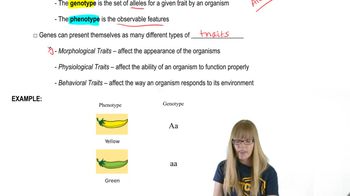A fellow student considers the issues in Problem 22 and argues that there is a more straightforward, nongenetic experiment that could differentiate between the two types of mutations. The experiment requires no fancy genetics and would allow you to easily assay the products of the other SOS genes. Propose such an experiment.
 Verified step by step guidance
Verified step by step guidance
Verified video answer for a similar problem:
Key Concepts
Types of Mutations

SOS Response in Bacteria

Experimental Design in Genetics

In 2010, a U.S. District Judge ruled to invalidate Myriad Genetics' patents on the BRCA1 and BRCA2 genes. Judge Sweet noted that since the genes are part of the natural world, they are not patentable. Myriad Genetics also holds patents on the development of a direct-to-consumer test for the BRCA1 and BRCA2 genes.
Would you agree with the ruling to invalidate the patenting of the BRCA1 and BRCA2 genes? If you were asked to judge the patenting of the direct-to-consumer test for the BRCA1 and BRCA2 genes, how would you rule?
In 2010, a U.S. District Judge ruled to invalidate Myriad Genetics' patents on the BRCA1 and BRCA2 genes. Judge Sweet noted that since the genes are part of the natural world, they are not patentable. Myriad Genetics also holds patents on the development of a direct-to-consumer test for the BRCA1 and BRCA2 genes.
J. Craig Venter has filed a patent application for his 'first-ever human-made life form.' This patent is designed to cover the genome of M. genitalium. Would your ruling for Venter's 'organism' be different from the judge's ruling on patenting of the BRCA1 and BRCA2 genes?
